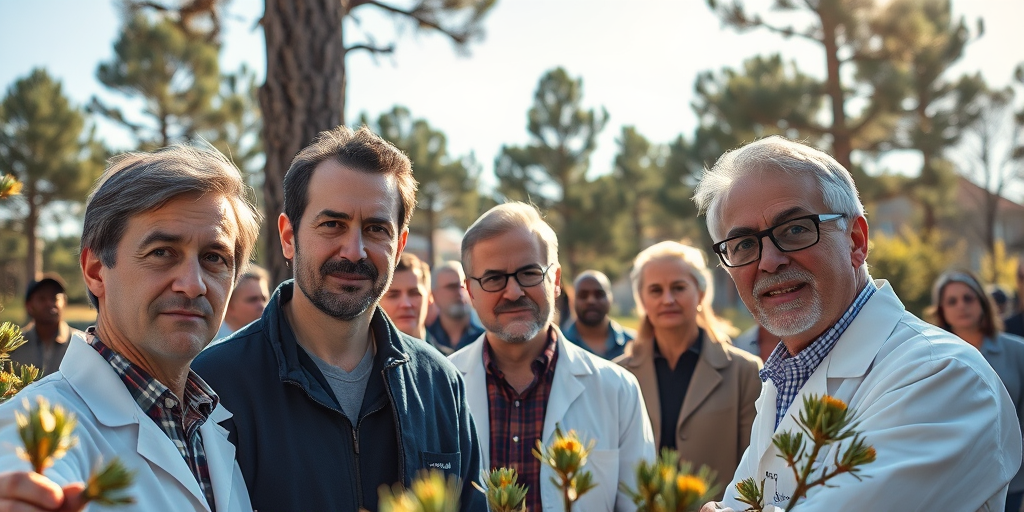Isolated Torrey Pine Populations Offer Genetic Insight, Lessons for Local Conservation Efforts
Researchers from Penn State University have uncovered crucial insights into the genetic diversity of the critically endangered Torrey pine, one of the world’s rarest pine trees, through an innovative study that could impact not only the Torrey pines themselves but also restoration efforts for tree species across the nation. These findings are particularly relevant for communities dealing with the challenges of invasive pests, disease, and climate change.
Study Unveils Cautionary Tale of Genetic Diversity
United States researchers studied the genetic diversity of the Torrey pine as part of a broader effort to understand how genetic variation can aid adaptation and survival under changing environmental conditions. While introducing genetic variation between isolated populations can drive evolution and adaptation, the study calls for caution when dealing with populations like the Torrey pines, which have evolved in isolation.
The comprehensive research involved a common garden experiment initiated in 2007, where scientists compared the fitness between island, mainland, and hybrid populations of Torrey pines to identify genetic variants and potential reproductive barriers. The research suggests interpopulation genetic variation could facilitate growth and adaptability, as hybrids demonstrated faster growth than their original populations.
However, climatic incompatibilities may influence the hybrids’ fitness, revealing that the island and mainland populations have begun developing reproductive barriers that affect their capacity to thrive under new climates. These findings could significantly impact restoration efforts for North American tree species, including the ash and American chestnut trees, which face threats from invasive species.
Local Impact: Informing Community-Based Restoration Efforts
While the Torrey pine may reside primarily in southern California, the study’s findings hold important implications for local communities and forest restoration efforts here in the Eastern U.S. In regions like the Appalachians, genetic diversity plays a pivotal role in the potential success of forest restoration initiatives targeting trees affected by pests and diseases. The research could guide future efforts to introduce genetic diversity into declining populations of trees such as ash and American chestnut, improving their resilience to invasive threats.
Jill Hamilton, the study’s team leader, highlights the importance of incorporating genetic diversity into successful forest restoration under climate change. “To conserve species with extremely low genetic diversity, introducing new genetic variation can be beneficial by providing a ‘rescue’ pathway that facilitates evolution and species adaptation,” Hamilton states.
Experts Weigh the Potential for Local Applications
The potential application of these insights extends beyond Torrey pines to forests across the nation. Understanding how to incorporate new genetic diversity into degraded environments is crucial, especially in areas with fragmented habitats. Lionel Di Santo, a co-author of the study, emphasizes that the approach used in the research could offer valuable guidelines for tailoring restoration strategies to different tree populations throughout the U.S.
Jessica Wright of the USDA Forest Service underscores the necessity for nuanced and science-driven approaches to bolster forest resilience. “Adopting strategies that incorporate genetic variation can enhance forest resilience against a range of challenges brought by climate change,” Wright explains.
Future Implications for Sustainability and Biodiversity
This research not only proposes new strategies for forest restoration but also brings to light the broader implications of federal funding support for environmental research. Given the ongoing threats posed by climate change and habitat disruption, continuous investment is essential for ensuring robust research that addresses these global challenges.
Although recent federal funding cuts threaten the sustainability and breadth of such research initiatives, the study reinforces the critical role of resources and funding in achieving meaningful change. Ensuring stable financial support for environmental research contributes to both academic progression and practical conservation outcomes beneficial to communities.
Community Resources for Engagement and Further Information
Residents interested in learning more about how research into genetic diversity can benefit local ecosystems and conservation practices are encouraged to engage with local environmental organizations and attend seminars hosted by experts in forest conservation. Contacting Penn State researchers or accessing additional studies via local universities and extension agencies can also provide comprehensive resources for understanding and applying these insights to local contexts.
As communities continue to grapple with the effects of climate change and ecological disturbances, the ongoing dialogue between researchers and local stakeholders remains vital. By leveraging the insights gained from studying the Torrey pines, communities can build more resilient natural environments and effectively tackle the challenges of tomorrow.
For further details, community members can contact Jeff Mulhollem at jjm29@psu.edu or 814-863-2719 for inquiries regarding the study and its broader implications for local conservation efforts.







